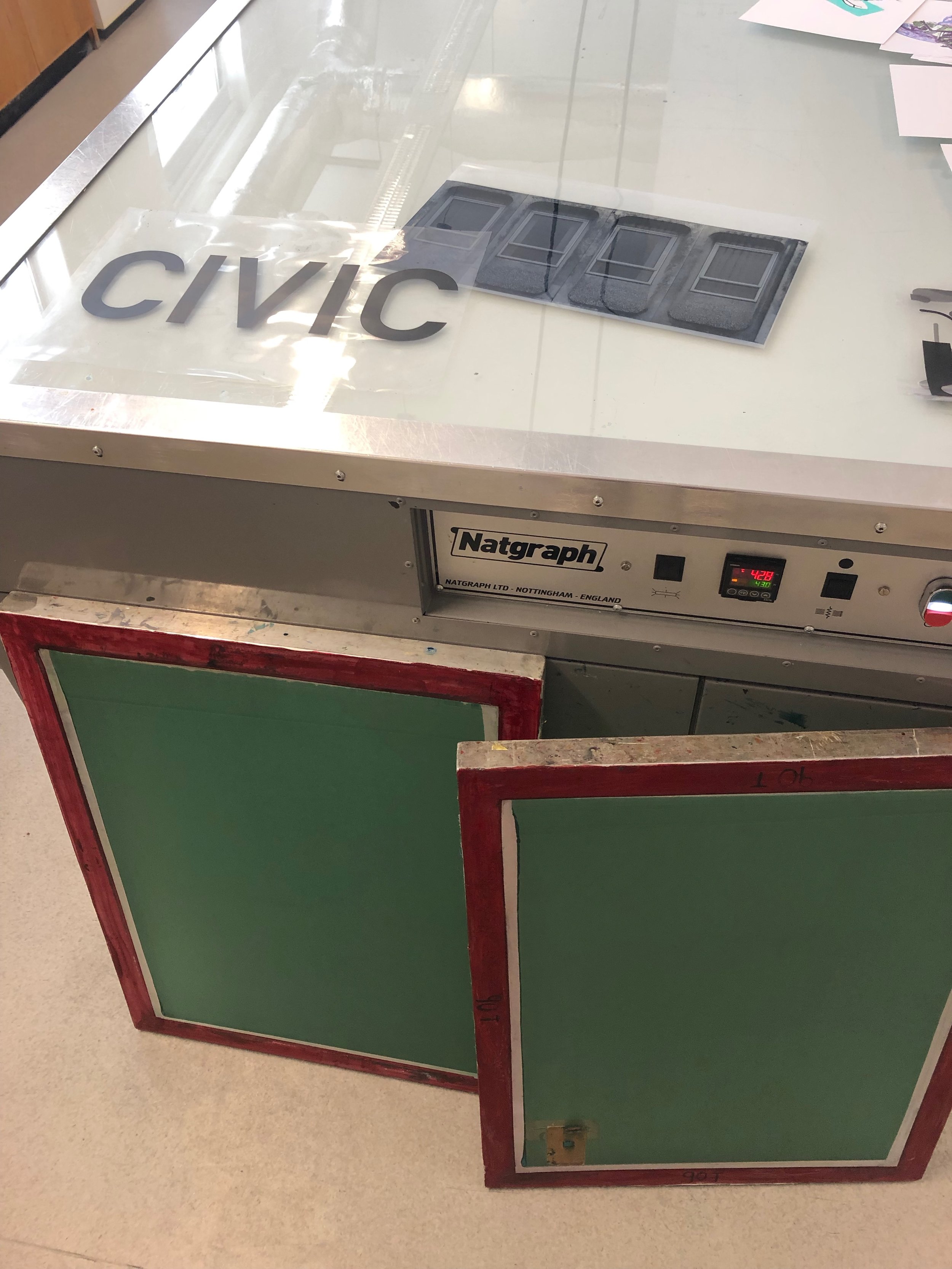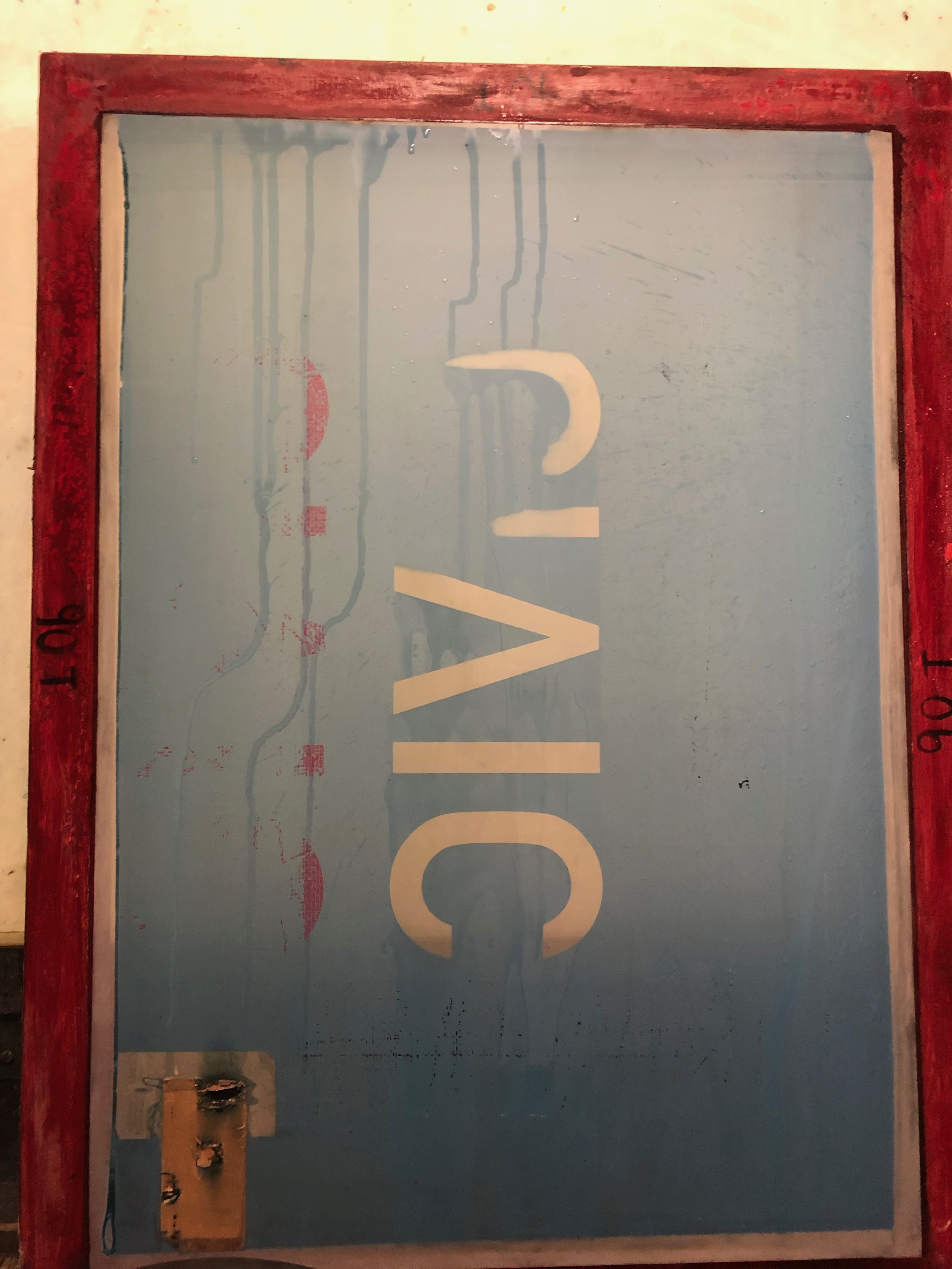Screen printing has a lure that has kept me doing it over the last few years. Its presence in my practice is largely unchanged since bringing it into projects 2 years ago. Of course screen prints can contain many colourful layers that make beautiful prints or perfectly registered patterns & shapes that sit wonderfully on the paper. I much prefer to exploit the process to obtain a degraded or uneven print. Regularly transferring images onto used boxes, plastic woven bags & most recently nylon sandbags. It is possible to alter the image in a few ways when pulling the squeegee. By altering the angle of which it is pulled across the screen, paint can flood the screen slightly more leaving a darker image. Next to the lighter images I am able to achieve a stained concrete aesthetic. In addition the surface of the plastic is not completely smooth so it doesn’t transfer the paint perfectly. This picks up all of the creases & folds on the surface creating a degraded effect & helping to raise the profile of the process & the material.
The act of printing the same images over & over has lead me to a point where im thinking about impossibility of repetition.
This body of work & the nature of the prints has also raised the issue of the images becoming sculptural as they hang in the space. They render parts of the space inaccessible & they move in the breeze or when someone brushes past. Although this is down to the physicality of the material, the images offer the idea of architecture & weight.
Political act?
The images I have used (windows from 2 of Devon’s Civic Centres) paired with the word CIVIC in Red has been likened to a tabloid aesthetic. A visual decision that has lead potentially to a politically charged work. This can be a discussion point. In recent conversation a debate about the use of public space came up, sparked by these prints. The word Civic raising questions for people about the use of urban space. This point that was raised for me was a catalyst in the decision making process that lead to this point.
It makes an audience question what CIVIC means to them. Paired with an architectural visual they often make connections to the urban scape or public spaces involving architecture. Whats more the hanging of the prints in the space can alter a space & how it is experienced by people. Here they are in front of a window which helps to explore the translucent nature of the bags & the 2 sided prints.





